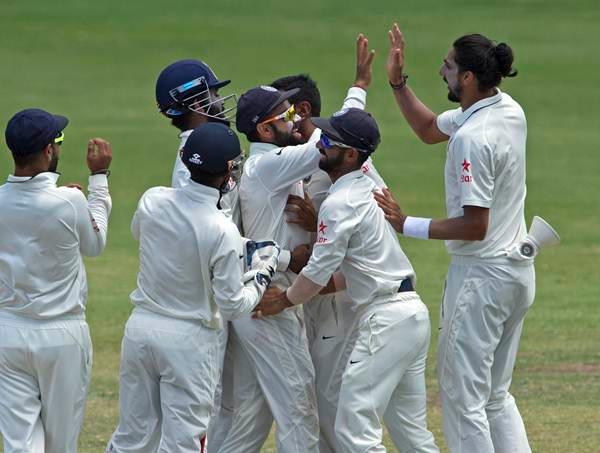Test cricket and the dying art of its warfare
View : 282
2 Min Read


In the last couple of years, many have voiced their concerns about the dying art of Test match cricket. Legends to fans to players and patrons of the game have stated publicly from time to time that Test cricket quite effectively is on the verge of extinction. The pink ball and playing under the lights has done its fair share to protect and preserve the longest format of the game. However, there is another aspect of the so-called ‘modern-day’ Test cricket that has troubled experts in recent times.
To this day, I clearly remember the first ever Test match that I went to. Nasser Hussain’s England had made the long trip from the Sardar Patel Stadium in Motera to play a Test match at the M Chinnaswamy Stadium in Bangalore. It wasn’t the perfect first Test for any fan to watch, but, it made me realize the crux of Test cricket on the whole. As was the case with many a fans, day 1 was all about ducking and weaving.
Nasser Hussain, Mark Ramprakash, and Michael Vaughan turned it on as the Indians seemingly did not know what to do. Although the visitors lost six wickets, the bottom line was clear to most of us fans. We didn’t care about the fact that the Indians had claimed six wickets. What was worse was that India had lost the openers at the end of day 2. Day 3 saw Sachin Tendulkar get off to a sparkling start and Rahul Dravid’s annoyed posture as the latter walked back to the dressing sheds. The next few sessions were about rain.
At that time, Test cricket was a game of patience. Although most fans didn’t realize it then, it was a game won on survival, character, and most importantly, grit. The warfare was to take five grueling days with satisfaction the only incentive at the end of it all.
Also read – Ravichandran Ashwin and the bowling all-rounder conundrum
Fast forward 14 years. The Indians had moved on from the doldrums of Sourav Ganguly and Rahul Dravid to Virat Kohli and Cheteshwar Pujara. The modern day players have certainly taken the game to the next level. There is absolutely no doubt about it. It was the fall of 2015 and India was playing host to South Africa, a team that had dominated them in the past, home and away.
However, this time, around, it was the Indians who were making the South Africans sing to their tune. Test match by Test match, it seemed as though the matches were getting shorter and shorter. Were the Proteas really that incompetent? They were playing like a second string side. In spite of quality players like Hashim Amla and AB de Villiers in the side, the South Africans were thrashed out of sight. A resounding 3-0 win with a fourth victory out of the question for the Indians courtesy of the rain.
Moreover, these matches were concluding within three to four days, something that certainly wasn’t the trend a few years ago. The ICC, for some time now has been toying with the idea of awarding a greater share of the points to those sides that make an attempt to churn out a victory. Ironically, the Ranji Trophy works on a similar model. Sides that churn out a victory are awarded the maximum points.
However, while all of this is an incentive to most Test-playing nations, the fact of the matter remains to be the same. Sides usually go in for the kill from day one. Virat Kohli and his band of merry men turn on the heat from the first day of the match.
Although it has certainly gone on to increase the viewership of Test cricket, romantics of the game remain puzzled. The game that is meant to go on for a period of five days typically concludes on late day 3 or day 4. While the pink ball has gone on to add flavor to what many had thought of to be a ‘bland’ and ‘mindless’ encounter between two sides wearing white, Test cricket is indeed a ‘test’. As former Australian skipper Ian Chappell once put it, Test cricket was a test. It was a test of your skill, courage, and ability to be patient; all at the same time. In a nutshell, Test cricket was meant for those with true grit and those who were tough as nails.
With Test matches concluding prematurely early, one is well within his rights to question the relevance and importance of Test match cricket. While many cricketers have given up Test cricket for lucrative contracts with domestic T20 sides across the globe, the point in discussion is the fact that the game is getting condensed to such an extent that the relevance of the format is once again in question.
In 2016, almost all Test matches have managed to provide the lip-smacking fan with a result. Of 13 matches played this year, three matches have been drawn. Why have they been drawn? Rain, bad light, an act of God perhaps, take your pick! Of these, four matches have either been an innings victory or a win by a margin of 200 runs.
At the end of it all, preservation of Test cricket will take much more than the pink ball and the floodlights. What is worse is the scary fact that not a single match played with the pink ball has been drawn. Moreover, the pink ball matches, on an average have typically concluded on either day 3 or day 4 of the Test match. This once again raises the uneasy question about the preservation of Test cricket.
Download Our App